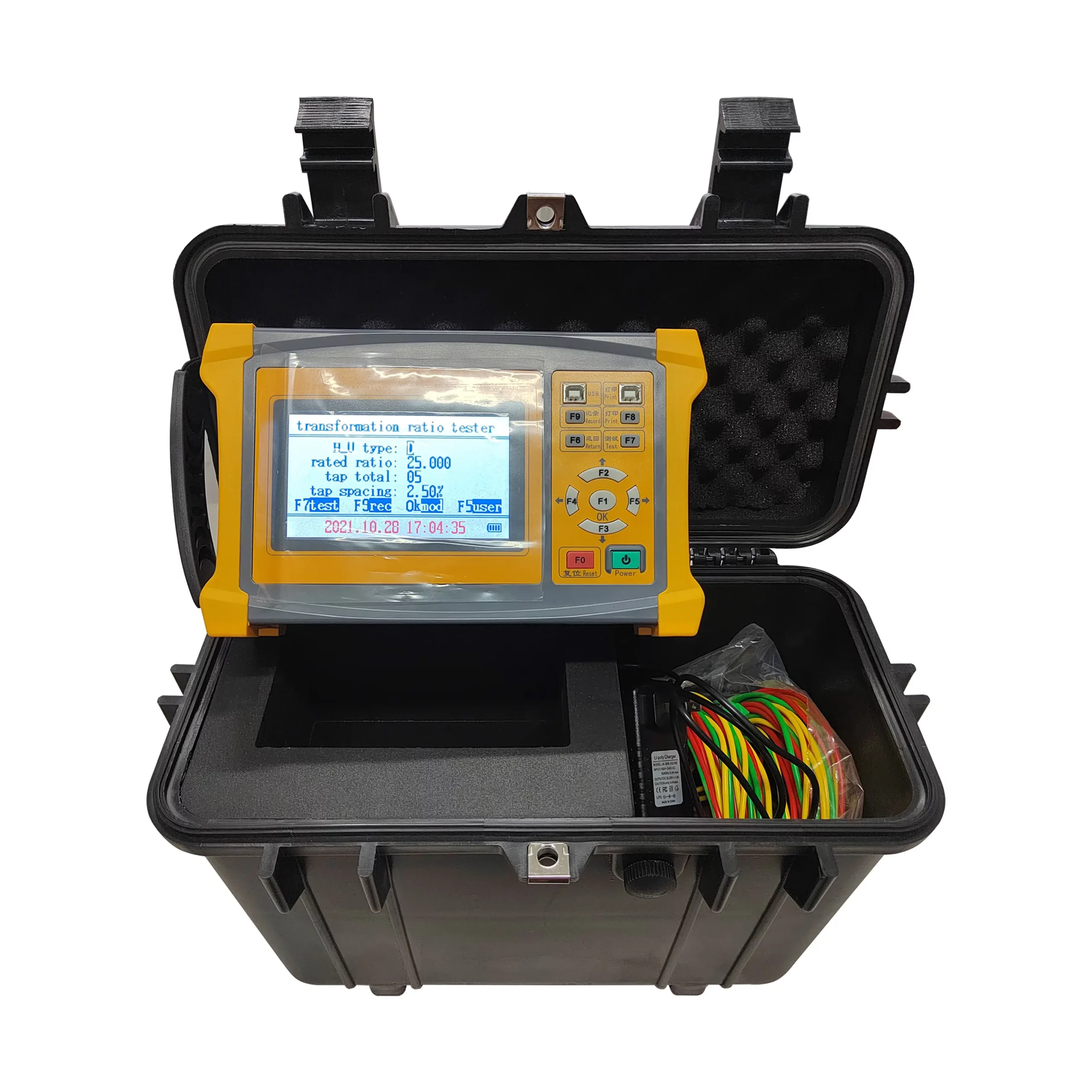Turn ratio testers, or TTR testers, are invaluable tools for transformer testing, maintenance, and quality control. With their ability to accurately measure turns ratio, phase displacement, and excitation current, these testers provide critical insights into transformer performance. By utilizing transformer turn ratio testers, professionals can optimize their testing processes, detect faults at an early stage, and ensure the reliable operation of transformers.

Definition Of Turn Ratio Testers And Functions
Turn ratio testers are specialized instruments designed to measure the turns ratio of transformers accurately. Here are the key features and functionalities of these testers:
a) Turns Ratio Measurement:
The primary function of a turn ratio tester is to measure the turns ratio of a transformer. This ratio determines the voltage transformation capability of the transformer and is crucial for proper operation.
b) Phase Displacement Measurement:
In addition to turns ratio, turn ratio testers can also measure the phase displacement between the primary and secondary windings of a transformer. This measurement helps identify any phase shift or imbalance, which can affect the transformer’s performance.
c) Excitation Current Measurement:
Turn ratio testers can also measure the excitation current of a transformer. This measurement provides insights into the transformer’s magnetizing characteristics and helps identify any abnormalities or inefficiencies.
d) Advanced Testing Capabilities:
Some turn ratio testers offer additional features such as vector group identification, winding resistance measurement, and on-load tap changer (OLTC) testing. These capabilities enhance the overall diagnostic capabilities of the tester, providing a comprehensive assessment of transformer performance.
How Does Turn Ratio Tester Apply?
Turn ratio testers find extensive applications in the field of transformer testing and maintenance. Some common applications include:
a) Routine Testing:
Turn ratio testing is a standard procedure performed during routine maintenance of transformers. It ensures that the transformer is operating within the specified turns ratio, indicating proper voltage transformation and overall performance.
b) Troubleshooting:
When a transformer exhibits abnormal behavior or performance issues, turn ratio testing can help identify potential problems. By comparing the measured turns ratio with the transformer’s nameplate rating, technicians can pinpoint any faults or discrepancies that may require further investigation or repairs.
c) Quality Control:
Turn ratio testing is essential during the manufacturing process of transformers. It ensures that the transformers meet the required specifications and performance standards before they are deployed in electrical networks or systems.
d) Commissioning:
Turn ratio testing is performed during the commissioning of transformers to verify their performance and adherence to design specifications. This step ensures that the installed transformers are functioning correctly and ready for operation.
List 4 Benefits of Turn Ratio Testers
Turn ratio testers offer several notable benefits, making them indispensable tools for transformer testing professionals:
a) Accurate and Reliable Measurements:
Turn ratio testers provide precise and reliable measurements of turns ratio, phase displacement, and excitation current. This accuracy ensures that transformer performance is evaluated correctly, enabling professionals to make informed decisions regarding maintenance or repairs.
b) Time and Cost Efficiency:
Turn ratio testing with dedicated testers is quicker and more efficient compared to manual methods. The automated measurement process saves time and reduces the need for complex calculations, improving overall testing efficiency.
c) Early Detection of Faults:
By accurately measuring turns ratio and phase displacement, turn ratio testers can detect potential faults or abnormalities in transformers at an early stage. This enables proactive maintenance and repairs, preventing further damage and reducing the risk of unexpected failures.
d) Enhanced Diagnostic Capabilities:
Advanced turn ratio testers offer additional features such as vector group identification and winding resistance measurement. These capabilities provide a comprehensive assessment of transformer performance, aiding in the identification of specific issues that may impact performance and reliability.